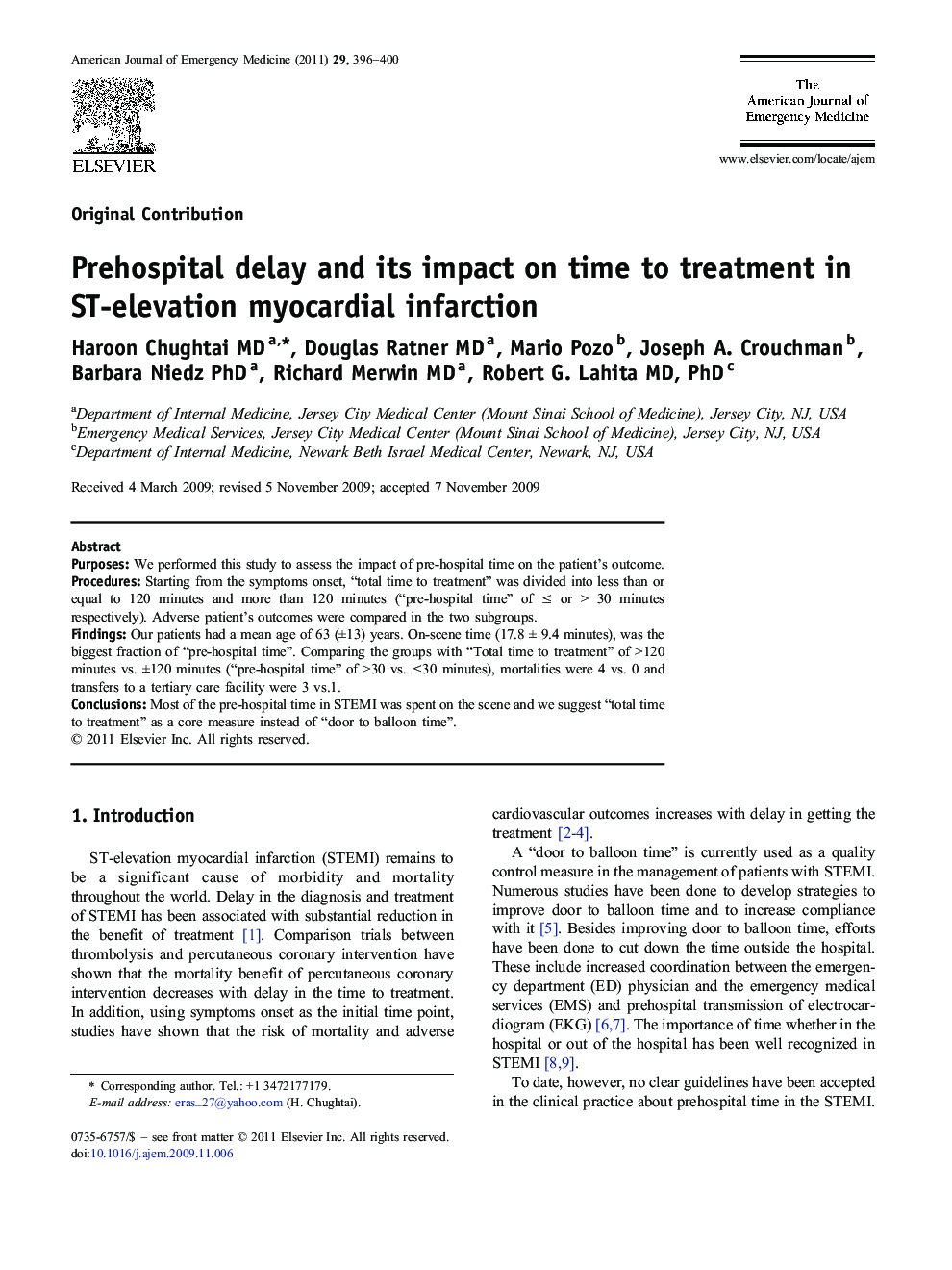| کد مقاله | کد نشریه | سال انتشار | مقاله انگلیسی | نسخه تمام متن |
|---|---|---|---|---|
| 3226282 | 1588149 | 2011 | 5 صفحه PDF | دانلود رایگان |

PurposesWe performed this study to assess the impact of pre-hospital time on the patient’s outcome.ProceduresStarting from the symptoms onset, “total time to treatment” was divided into less than or equal to 120 minutes and more than 120 minutes (“pre-hospital time” of ≤ or > 30 minutes respectively). Adverse patient’s outcomes were compared in the two subgroups.FindingsOur patients had a mean age of 63 (±13) years. On-scene time (17.8 ± 9.4 minutes), was the biggest fraction of “pre-hospital time”. Comparing the groups with “Total time to treatment” of >120 minutes vs. ±120 minutes (“pre-hospital time” of >30 vs. ≤30 minutes), mortalities were 4 vs. 0 and transfers to a tertiary care facility were 3 vs.1.ConclusionsMost of the pre-hospital time in STEMI was spent on the scene and we suggest “total time to treatment” as a core measure instead of “door to balloon time”.
Journal: The American Journal of Emergency Medicine - Volume 29, Issue 4, May 2011, Pages 396–400